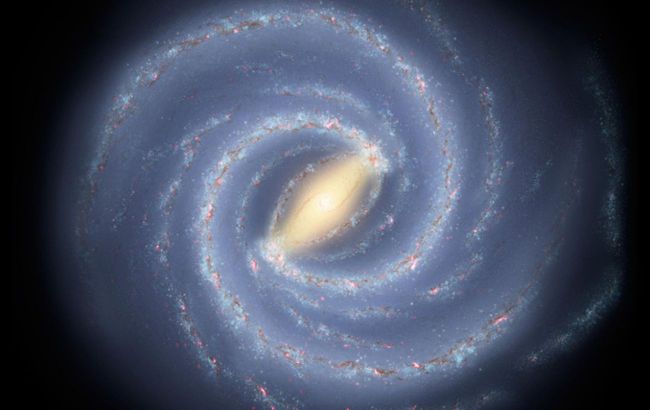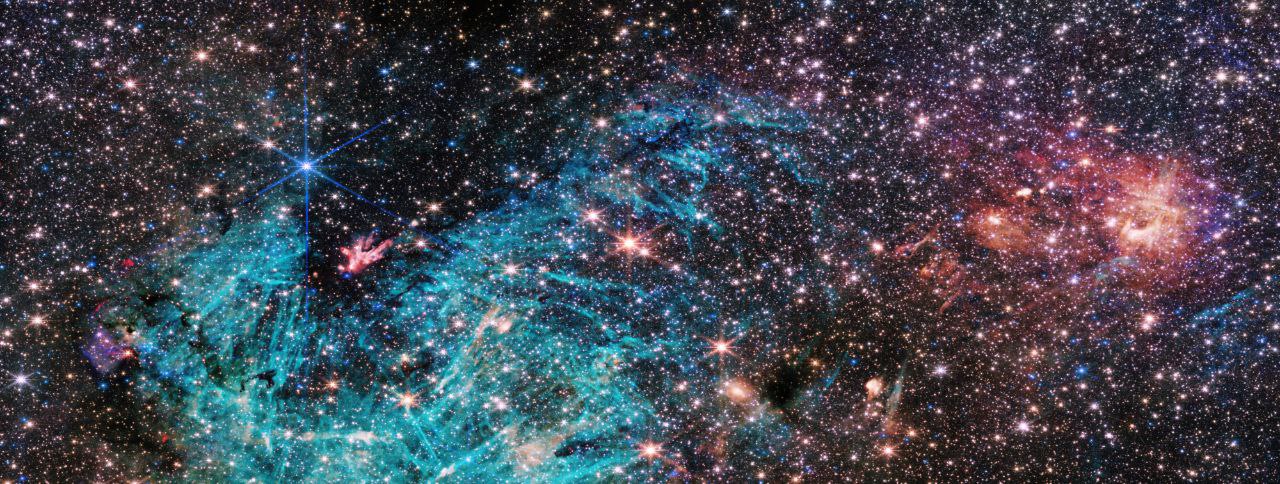Heart of galaxy: NASA reveals unique images of the Milky Way
 The Milky Way - a spiral galaxy (Photo: NASA/JPL-Caltech)
The Milky Way - a spiral galaxy (Photo: NASA/JPL-Caltech)
The James Webb Space Telescope peeked through gas and dust into the center of the Milky Way and captured unique photos of the dense heart of our galaxy.
RBC-Ukraine discusses what is known about the Milky Way and its central part, as well as the launch purpose and timing of the James Webb Space Telescope.
Sources used for the material: NASA, Wikipedia.
The Milky Way
The Milky Way has been known to people since ancient times. In 1610, Galileo Galilei discovered that the diffuse light of the Milky Way was created by a large number of faint stars.
The first attempt to determine the size and shape of our galaxy was made by William Herschel in 1784-1785, and Edwin Hubble in 1924-1925 was able to prove that the universe is not limited by it.
Contemporary scientists confirmed that the Milky Way is a spiral galaxy where our Solar System is located. Most stars in this galaxy are concentrated in the so-called galactic disk with spiral arms.
The Milky Way is the second-largest galaxy in size and number of stars after the Andromeda galaxy, but the masses of these two galaxies are comparable.
The uniqueness of the image
Recently, the James Webb Space Telescope captured unique images of the dense center of our galaxy with unprecedented detail.
Thanks to its infrared capabilities, it allowed astronomers to peer through gas and dust into the heart of the Milky Way.
This concerns the still-mysterious region of star formation known as Sagittarius C (Sgr C). It's located approximately 300 light-years from the supermassive black hole at the center of the Milky Way.
 The center of our galaxy (photo: NASA/ESA/CSA/STScI/S.Crowe)
The center of our galaxy (photo: NASA/ESA/CSA/STScI/S.Crowe)
According to student and lead observer Samuel Crowe, "There's never been any infrared data on this region with the level of resolution and sensitivity we get with Webb."
He added that the unique telescope "reveals an incredible amount of detail, allowing us to study star formation in this sort of environment in a way that wasn't possible previously."
Professor Jonathan Tan clarified that the "galactic center is the most extreme environment in our Milky Way galaxy," as it offers the most "rigorous test" ground for all current theories regarding star formation.
What is visible in the photo
The image depicts a densely populated area with around 500,000 stars, showcasing clusters of protostars. These protostars are still in the process of formation and accumulation of mass. They emit streams that illuminate, resembling bonfires amidst the infrared-dark cloud.
At the center of this young cluster lies a previously known massive protostar, which is 30 times more massive than our Sun. However, the cloud from which these protostars emerge is so dense that the light from the stars behind it doesn't reach the telescope.
The James Webb Space Telescope's specialized instrument, the NIRCam (Near-Infrared Camera), also captured extensive ionized hydrogen emission surrounding the lower part of the dark cloud, depicted in a blue hue on the image.
 Components of the Milky Way (photo: NASA/ESA/CSA/STScI/S.Crowe)
Components of the Milky Way (photo: NASA/ESA/CSA/STScI/S.Crowe)
"There are turbulent, magnetized gas clouds that are forming stars, which then impact the surrounding gas with their outflowing winds, jets, and radiation," emphasized researcher Rubén Fedriani.
According to Fedriani, scientists have amassed a vast amount of data about this extreme environment and are only beginning to delve into its study.
"Massive stars are factories that produce heavy elements in their nuclear cores, so understanding them better is like learning the origin story of much of the universe," concluded Crowe.
James Webb Space Telescope
The James Webb Space Telescope (JWST) is an American orbital infrared space telescope designed for a broad spectrum of observations in astronomy and cosmology. It aims to observe distant objects and events in the Universe, such as the formation of the earliest galaxies.
 Telescope construction (photo: NASA/Chris Gunn)
Telescope construction (photo: NASA/Chris Gunn)
This telescope succeeded the Hubble Space Telescope as NASA's flagship mission in astrophysics. It was launched on December 25, 2021.
At that time, it was the largest, most expensive, and most sensitive optical and infrared space telescope in human history.
The project is a result of international cooperation involving 17 countries (led by NASA).
It was named after the second NASA administrator, James Webb, who led the agency until 1968.

